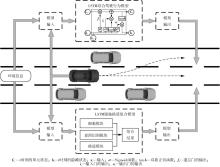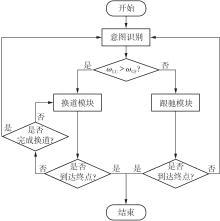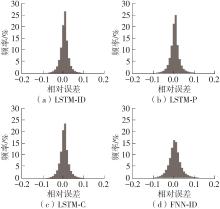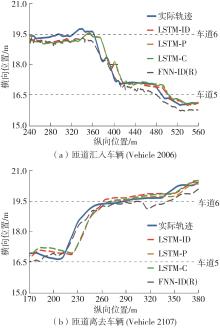| 1 |
黄玲,郭亨聪,张荣辉,等 .人机混驾环境下基于LSTM的无人驾驶车辆换道行为模型 [J].中国公路学报,2020,33(7):156-166.
|
|
HUANG Ling, GUO Heng-cong, ZHANG Rong-hui,et al .LSTM-based lane-changing behavior model for unmanned vehicle under environment of heterogeneous human-driven and autonomous vehicles [J].China Journal of Highway and Transport,2020,33(7):156-166.
|
| 2 |
GIPPS P G .A behavioural car-following model for computer simulation [J].Transportation Research Part B:Methodological,1981,15(2):105-111.
|
| 3 |
WU J, BRACKSTONE M, MCDONALD M .The validation of a microscopic simulation model:a methodological case study [J].Transportation Research Part C:Emerging Technologies,2003,11(6):463-479.
|
| 4 |
HE Z, ZHENG L, GUAN W .A simple nonparametric car-following model driven by field data [J].Transportation Research Part B:Methodological,2015,80:185-201.
|
| 5 |
HUANG X, SUN J, SUN J .A car-following model considering asymmetric driving behavior based on long short-term memory neural networks [J].Transportation Research Part C:Emerging Technologies,2018,95:346-362.
|
| 6 |
HUANG L, GUO H, ZHANG R,et al .Capturing drivers’lane changing behaviors on operational level by data driven methods [J].IEEE Access,2018,6:57497-57506.
|
| 7 |
JIA B, YANG D, ZHANG X,et al .Car-following model considering the lane-changing prevention effect and its stability analysis [J].The European Physical Journal B,2020,93(8):1-9.
|
| 8 |
TOLEDO T, KOUTSOPOULOS H N, BEN-AKIVA M. Integrated driving behavior modeling [J].Transportation Research Part C:Emerging Technologies,2007,15(2):96-112.
|
| 9 |
HUANG L, GUO H, ZHANG R,et al .A data-driven operational integrated driving behavioral model on highways [J].Neural Computing and Applications,2020,32(16):13017-13033.
|
| 10 |
季学武,费聪,何祥坤,等 .基于LSTM网络的驾驶意图识别及车辆轨迹预测 [J].中国公路学报,2019,32(6):34-42.
|
|
JI Xue-wu, FEI Cong, HE Xiang-kun,et al .Intention recognition and trajectory prediction for vehicles using LSTM network [J].China Journal of Highway and Transport,2019,32(6):34-42.
|
| 11 |
HOCHREITER S, SCHMIDHUBER J .Long short-term memory [J].Neural Computation,1997,9(8):1735-1780.
|
| 12 |
ADELI H .Neural networks in civil engineering:1989-2000 [J].Computer‐Aided Civil and Infrastructure Engineering,2001,16(2):126-142.
|
| 13 |
LECUN Y, BENGIO Y, HINTON G. Deep learning [J].Nature,2015,521(7553):436-444.
|
| 14 |
van BRUMMELEN J, O’BRIEN M, GRUYER D,et al .Autonomous vehicle perception:The technology of today and tomorrow [J].Transportation Research Part C:Emerging Technologies,2018,89:384-406.
|
| 15 |
FAN P, GUO J, ZHAO H,et al .Car-following modeling incorporating driving memory based on autoencoder and long short-term memory neural networks [J].Sustainability,2019,11(23):6755.
|
| 16 |
JIA S, HUI F, LI S,et al .Long short-term memory and convolutional neural network for abnormal driving behaviour recognition [J].IET Intelligent Transport Systems,2020,14(5):306-312.
|
| 17 |
TANG L, WANG H, ZHANG W,et al .Driver lane change intention recognition of intelligent vehicle based on long short-term memory network [J].IEEE Access,2020,8:136898-136905.
|
| 18 |
CHEN X, SUN J, MA Z,et al .Investigating the long-and short-term driving characteristics and incorporating them into car-following models [J].Transportation Research Part C:Emerging Technologies,2020,117:102698.
|
| 19 |
NAGAHAMA A, YANAGISAWA D, NISHINARI K .Car-following characteristics of various vehicle types in respective driving phases [J].Transportmetrica B:Transport Dynamics,2020,8(1):22-48.
|
| 20 |
WANG X, JIANG R, LI L,et al .Capturing car-following behaviors by deep learning [J].IEEE Transactions on Intelligent Transportation Systems,2017,19(3):910-920.
|
| 21 |
SUN L, JAFARIPOURNIMCHAHI A, KORNHAUSER A,et al .A new higher-order viscous continuum traffic flow model considering driver memory in the era of autonomous and connected vehicles [J].Physica A:Statistical Mechanics and Its Applications,2020,547:123829.
|
| 22 |
Federal Highway Administration .Next Generation Simulation (NGSIM)[EB/OL].(2020-11-02)[2022-09-09]..
|
| 23 |
Federal Highway Administration .Revised monograph on traffic flow theory [EB/OL].(2017-01-31)[2022-09-09] .
|
| 24 |
HUBER P J. Robust statistics [M].New York:John Wiley & Sons,2004.
|













